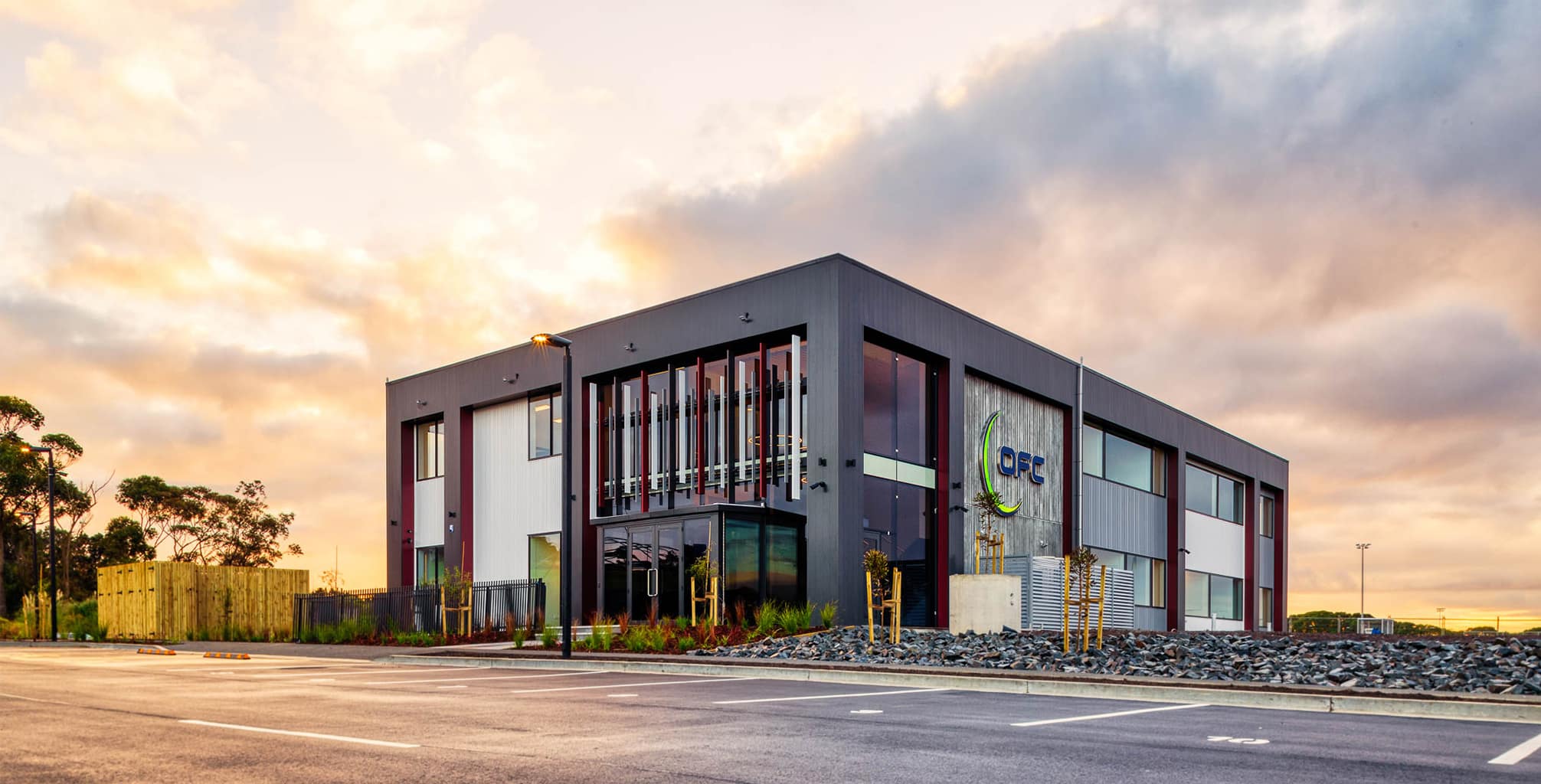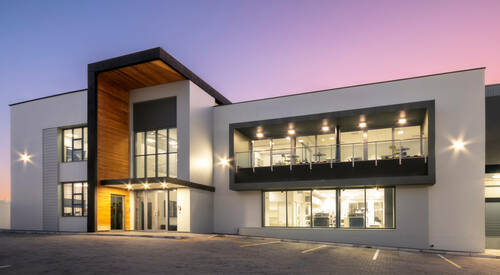Unveiling the Comprehensive Providers Offered by Commercial Architects for Modern Dope
Commercial Architects offer a vital function in contemporary growth jobs. They blend style visual appeals with functionality while adhering to governing needs. Their knowledge prolongs beyond mere construction, integrating sustainable techniques and innovative innovations. As they browse intricate zoning legislations, Architects collaborate with various stakeholders to bring visions to life. This complex technique questions concerning the progressing role of Architects fit modern-day areas and the effect of their deal with future growths.
Comprehending the Function of Commercial Architects in Modern Advancement
In contemporary urban landscapes, Commercial Architects play an essential function in shaping functional and visual rooms that fulfill diverse service demands. Their experience extends past mere style; they navigate complicated zoning regulations, constructing codes, and environmental regulations. By collaborating with clients, they determine details demands, making certain that each job aligns with the customer's vision while likewise thinking about useful aspects such as sustainability and cost-effectiveness. Commercial Architects are adept at incorporating innovative technologies and products right into their layouts, enhancing both the performance and power performance of structures. They carry out thorough site evaluations to evaluate the possible challenges and chances offered by a location. Additionally, effective communication with specialists and various other stakeholders is necessary, guaranteeing that the project proceeds smoothly from perception to completion. Inevitably, Commercial Architects contribute in creating rooms that not just meet practical objectives however likewise add to the overall character and vibrancy of metropolitan atmospheres.
Idea Style: Transforming Ideas Into Fact
Concept style acts as a vital stage in Commercial style, where cutting-edge design solutions emerge from innovative brainstorming. This process relies upon joint ideation, bringing with each other varied point of views to improve and boost preliminary concepts. As concepts form, they transform from abstract concepts into tangible building facts.
Innovative Style Solutions
Changing ideas into truth is the characteristic of cutting-edge layout remedies in Commercial style. These solutions mix imagination with capability, attending to the one-of-a-kind needs of contemporary growths. By leveraging advanced innovations and lasting techniques, Architects craft spaces that are not just aesthetically appealing however additionally efficient and adaptable. Focus on individual experience drives the layout procedure, guaranteeing that settings foster performance and cooperation. Each project take advantage of a customized approach, where ideas are carefully established to show the customer's vision while thinking about future patterns. Innovative style solutions additionally prioritize flexibility, enabling alterations over time as service requirements progress. Inevitably, these techniques enhance the total value of Commercial spaces, making them pivotal in today's affordable landscape.

Collaborative Ideation Process
Partnership works as the foundation of the ideation procedure in Commercial style, cultivating imagination and innovation amongst varied stakeholders. Architects, clients, engineers, and neighborhood members participate in dynamic conversations, guaranteeing that all perspectives are taken into consideration. This inclusive strategy enables the exploration of various design ideas, motivating one-of-a-kind remedies that straighten with the task's vision. With workshops and brainstorming sessions, concepts progress and refine, transforming initial principles right into substantial styles. Modern technology also plays a critical role, with devices such as Structure Information Modeling (BIM) helping with real-time collaboration and changes. Eventually, this collective ideation procedure not just boosts the style end result but likewise grows a sense of possession and financial investment amongst all events included, resulting in effective Commercial developments.
Zoning Analysis: Browsing Laws and Compliance
As programmers start on new jobs, understanding zoning laws is important to making certain compliance and staying clear of pricey hold-ups. Zoning evaluation plays an essential duty in this procedure, as it entails assessing local zoning legislations that determine land usage, constructing height, density, and obstacles. Commercial Architects have the experience to browse these intricate guidelines, aiding clients determine permitted uses and any type of necessary variations.
Sustainable Design Practices: Structure for the Future
Lasting layout practices are significantly important in the domain name of Commercial style, specifically as ecological worries remain to rise. Architects focus on environment-friendly materials, energy-efficient systems, and design techniques that reduce waste and ecological effect. Integrating sustainable power sources, such as solar panels and wind generators, allows structures to produce their very own power and decrease reliance on fossil fuels.Furthermore, sustainable layout stresses the value of interior environmental high quality. This includes using natural light, enhancing ventilation, and selecting non-toxic products to enhance resident health and productivity. Green roofings and living wall surfaces are also preferred attributes that add to biodiversity and urban cooling.Additionally, Commercial Architects frequently integrate water conservation strategies, like rainwater harvesting and drought-resistant landscaping. With these cutting-edge methods, they create spaces that not just meet contemporary demands yet additionally foster a lasting future, attending to the expanding demand for accountable growth in the modern world.
Task Management: Ensuring Timely and Effective Execution
Effective job management is essential for ensuring that Commercial architecture tasks are completed on schedule and within spending plan. This function encompasses a series of duties, including the sychronisation of various stakeholders, timelines, and resources. Commercial Architects take advantage of their expertise to develop in-depth project plans that outline important landmarks and deliverables, enabling organized progression tracking.Regular interaction amongst employee and clients is vital, cultivating openness and helping with timely decision-making. Risk administration techniques are likewise utilized to identify prospective challenges early, enabling proactive solutions to be created. By utilizing innovative project management devices, Architects can keep an eye on task performance in real-time, making adjustments as required to maintain efficiency.
Interior Decoration: Developing Useful and Aesthetic Areas
Inside layout plays a crucial function in enhancing both capability and aesthetics within image source Commercial rooms. Reliable space planning can optimize workflow and enhance individual experience, while visual layout principles add to an aesthetically attractive environment - commercial architects. With each other, these components create spaces that are not only useful yet also motivating
Area Preparation Performance
While maximizing the energy of readily available area, Commercial Architects prioritize area planning efficiency to develop both useful and visually pleasing atmospheres. This approach involves cautious analysis of the spatial format to assure excellent use every square foot. Architects consider factors such as operations, accessibility, and all-natural light to improve usability. By strategically putting furniture, equipment, and workstations, they assist in motion and interaction among customers, promoting performance. Additionally, zoning various areas for certain functions helps in handling sound and personal privacy, producing a harmonious atmosphere. With efficient room preparation, Commercial Architects can change restraints right into opportunities, making certain that each room satisfies the diverse needs of its occupants while sticking to regulatory needs and industry criteria.
Aesthetic Design Concepts
Aesthetic style concepts play a necessary duty in forming atmospheres that are not only practical but likewise aesthetically enticing. These concepts guide Commercial Architects in developing rooms that resonate pop over to this web-site with customers while improving brand name identity. Secret components consist of equilibrium, proportion, and consistency, which collaborate to create a cohesive appearance. Color design and materials are very carefully picked to stimulate preferred emotions and sustain the overall motif. Furthermore, lights plays an essential function, affecting mood and visibility while highlighting building attributes. By incorporating these principles, Architects assure that rooms are not only practical but likewise inviting and motivating. Eventually, efficient visual layout fosters a favorable individual experience, encouraging engagement and complete satisfaction in Commercial environments.
Collaboration With Stakeholders: Promoting Effective Partnerships
Effective collaborations in Commercial architecture rest on effective cooperation with stakeholders, making sure that every voice is listened to and valued. This joint approach involves interesting various parties, including clients, professionals, and area participants, throughout the layout and growth process. By promoting open interaction, Commercial Architects can attend to worries, collect insights, and align the task's vision with stakeholder expectations.The combination of diverse perspectives boosts imagination and development, bring about more useful and aesthetically pleasing styles. Normal meetings, comments sessions, and workshops facilitate this discussion, permitting Architects to adapt their strategies in reaction to stakeholder input. In addition, establishing depend on through openness and accountability strengthens these partnerships, causing a smoother task execution.Ultimately, the success of contemporary advancements depends on the Architects' capacity to browse and integrate varying interests, creating a collective atmosphere that advertises common objectives and common success.
Often Asked Concerns
Exactly How Do Commercial Architects Take Care Of Budget Plan Constraints During a Job?

What Kinds of Software Do Commercial Architects Generally Use?
Commercial Architects frequently make resource use of software program such as AutoCAD for drafting, Revit for Structure Info Modeling, SketchUp for 3D modeling, and task management devices like Microsoft Job to improve collaboration and improve operations throughout the style process.
Can Commercial Architects Aid With Acquiring Funding for Projects?
Commercial Architects can assist in acquiring financing for projects by preparing comprehensive propositions, helping to express style visions, and offering monetary projections that can enhance the likelihood of safeguarding necessary funding from financiers or monetary establishments.
Just How Do Architects Make Sure Safety Throughout the Building And Construction Process?
Architects assure safety and security throughout building by carrying out rigorous style requirements, collaborating with designers, carrying out normal website inspections, adhering to local guidelines, and fostering interaction amongst all stakeholders to reduce risks and promote a protected working setting.
What Recurring Support Do Architects Provide After Job Conclusion?
After task completion, Architects use ongoing assistance via maintenance consultations, performance evaluations, and style adjustments. They ensure structures meet evolving demands, address prospective problems, and keep conformity with regulations, cultivating a long-lasting partnership with clients.